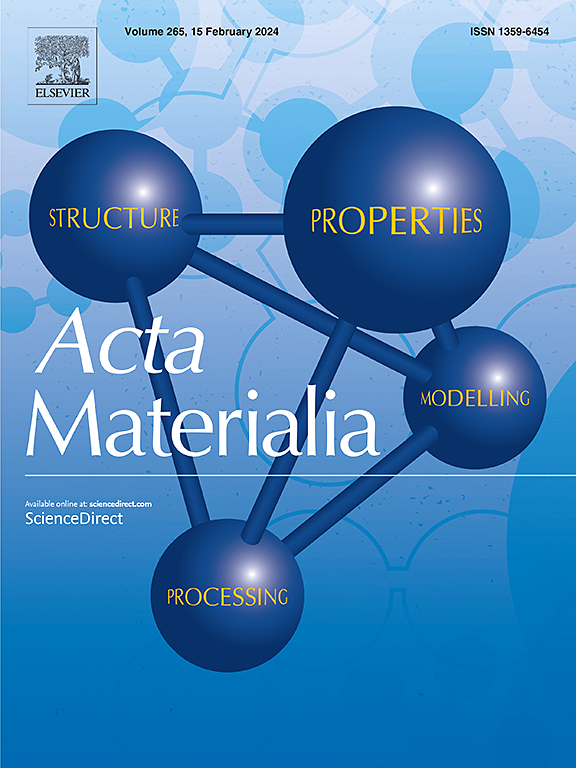通过空间分辨时域热反射定量热生长氧化物中的脱氮和孔隙度
IF 9.3
1区 材料科学
Q1 MATERIALS SCIENCE, MULTIDISCIPLINARY
引用次数: 0
摘要
随着碳化硅(SiC)基陶瓷基复合材料在最先进的燃气涡轮发动机中取代金属,必须设计新的热和环境屏障涂层(EBC)系统来适应涡轮叶片材料的变化。已经证明,四相镱是这些ebc的一个很有前途的候选材料,但需要进一步研究它们的降解机制,以提高它们在发动机运行中典型的热循环中的使用寿命。失效的一个点是由于在稀土二硅酸盐和涡轮叶片之间的界面上的热生长氧化物(TGO)结晶而产生的剥落。当EBC系统在蒸汽中热循环时,水和空气与含有涂层和/或衬底层的Si发生反应,形成无定形二氧化硅。经过多次循环,这种TGO结晶形成方石英,在热循环过程中,方石英会经历巨大的体积应变,导致TGO和硅酸盐面涂层界面上形成孔隙和裂纹,最终导致涂层从涡轮叶片上脱落。在这项工作中,我们提出了一种利用时域热反射(TDTR)以微米分辨率绘制热导率的空间变化来测量ebc中方英石形成的方法。然后,我们根据在整个TGO中测量的导热系数分布来量化TGO层的脱硝,并测量界面处的孔隙度,作为涂层有效性和分层韧性的衡量标准。本文章由计算机程序翻译,如有差异,请以英文原文为准。


Quantifying devitrification and porosity in thermally grown oxides through spatially-resolved time-domain thermoreflectance
As silicon carbide (SiC)-based ceramic matrix composites replace metals in state-of-the-art gas turbine engines, new thermal and environmental barrier coating (EBC) systems must be designed to accommodate the change in turbine blade material. Ytterbium disilicates have been demonstrated to be a promising candidate for these EBCs, but further research is needed into their degradation mechanisms to improve their lifetimes during thermal cycling typical in engine operation. One point of failure is spallation due to crystallization of the thermally grown oxide (TGO) at the interface between the rare earth disilicate and the turbine blade. As the EBC system is thermally cycled in steam, water and air react with underlying Si containing coating and/or substrate layers, forming amorphous silica. Over many cycles, this TGO crystallizes to form cristobalite, which experiences significant volume strain as it is thermally cycled, resulting in the formation of pores and cracks at the interface of the TGO and silicate topcoat, eventually leading to the spallation of the coating from the turbine blade. In this work, we present a method for measuring cristobalite formation in EBCs by using time-domain thermoreflectance (TDTR) to map spatial variations in thermal conductivity with micrometer resolution. We then quantify the devitrification of the TGO layer based on the distribution of thermal conductivity measured throughout the TGO and measure the resulting degree of porosity at the interface as a gauge of coating effectiveness and delamination toughness.
求助全文
通过发布文献求助,成功后即可免费获取论文全文。
去求助
来源期刊

Acta Materialia
工程技术-材料科学:综合
CiteScore
16.10
自引率
8.50%
发文量
801
审稿时长
53 days
期刊介绍:
Acta Materialia serves as a platform for publishing full-length, original papers and commissioned overviews that contribute to a profound understanding of the correlation between the processing, structure, and properties of inorganic materials. The journal seeks papers with high impact potential or those that significantly propel the field forward. The scope includes the atomic and molecular arrangements, chemical and electronic structures, and microstructure of materials, focusing on their mechanical or functional behavior across all length scales, including nanostructures.
 求助内容:
求助内容: 应助结果提醒方式:
应助结果提醒方式:


